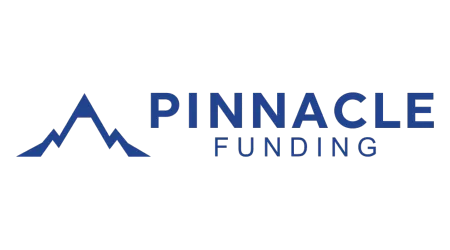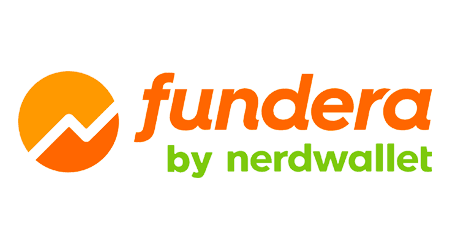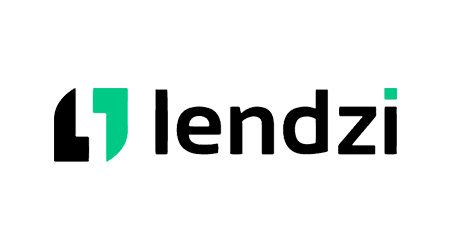Interest rates are one of the most significant factors in the cost of a business loan. In 2025, bank term loans average between 6.7% and 7.8% for borrowers with top-tier credit, according to the Federal Reserve. Other business loans, like short-term working capital loans, can reach 150% APR or more.
With such a wide range, it’s hard to know if you’re getting a good deal unless you understand typical rates by loan type. Below, we break down average business loan rates and how to qualify for the most competitive offers.
Average business loan interest rates
When it comes to business loan interest rates, there’s no “one size fits all.” In fact, the range of rates available for small business loans varies so much that it makes more sense to break down the rates by the type of business loan.
Of course, other factors affect your rate, like your credit score, revenue, collateral and time in business.
When evaluating business loans, always compare APRs, not interest rates, to calculate how much your loan will cost. The APR includes both the loan’s interest rate and any applicable fees, so it shows the total cost of borrowing better than just the interest rate.
Current business loan rates by loan type
Since some business loans come with fees rather than interest, let’s take a look at how average APRs compare for the most common loan types. Keep in mind that lenders can vary widely in how much they charge, and the rate you qualify for depends largely on your credit score and business financials.
| Type of loan | Interest rate |
|---|---|
| Bank term loan | 6.78% to 10.43% |
| Online business loan | 8% to 75% |
| Business line of credit | 8% to 60%+ |
| SBA loans |
|
| Equipment financing | 5% to 25%+ |
| Merchant cash advance | 25% to 250%+ |
| Invoice factoring and financing | 13% to 60% |
In general, bank term loans have the most competitive rates, especially for existing customers, while short-term working capital loans from online lenders tend to have the highest rates.
How are SBA rates different?
While the Small Business Administration (SBA) establishes the maximum interest rates that lenders can charge for SBA loan programs, these rates are largely based on the Prime Rate or US Treasury security rates and the underwriting guidelines of the lender, and they come with rate limits.
For SBA 7(a) variable loans:
| Loan amount | Maximum rate |
|---|---|
| $50,000 or less | Base rate + 6.5% |
| $50,001 – $250,000 | Base rate + 6% |
| $250,001 – $350,000 | Base rate + 4.5% |
| $350,001+ | Base rate + 3% |
SBA 7(a) loans can have either fixed or variable interest rates.
SBA 504 loans have fixed interest rates that are pegged to yields on 10-year US Treasury securities, plus a margin. Rates for SBA Microloans and Community Advantage loans are also subject to SBA maximums but vary depending on the lender.
What is a business loan interest rate?
A business loan interest rate is the cost of borrowing, expressed as a percentage of the loan amount that your lender charges regularly. There are two types of interest rates: Fixed or variable. There are also two types of interest calculations: Simple or compound.
Here’s a rundown of the differences, plus an explanation of how a business loan’s interest rate differs from the annual percentage rate (APR).
Fixed interest rates
- Stay the same for the entire loan term.
- Offer predictable payments and less risk because the rate never changes.
Variable interest rates
- Can change over time — usually monthly or quarterly.
- Made up of two parts:
- A benchmark rate (also called an index).
- A margin based on your credit and other factors.
- Common benchmark rates include the Secured Overnight Financing Rate (SOFR) and the Wall Street Journal prime rate, which reflect the lowest rates lenders are offering.
Hybrid loans
Some business loans combine both fixed and variable rates during the term, though these are less common.
Simple interest
- Charged only on your original loan amount (the principal).
- Easy to calculate:
- Principal × interest rate × loan term (in years) = simple interest
Compound interest
- Interest is charged on your principal plus any unpaid interest that’s built up since your last payment.
- Compound interest is more expensive than simple interest.
- Lenders may compound annually, monthly, weekly or even daily — and the more often it compounds, the more you pay overall.
Interest rate vs. annual percentage rate (APR)
Unlike an interest rate, the APR includes both the interest and fees of a given loan, as a percentage, that applies to your loan per year. Lenders often advertise a loan’s APR, instead of its interest rate. That’s because it’s a more accurate picture of how much your loan will cost.
When comparing APRs, make sure you’re also comparing loans with similar terms and amounts. For example, a loan with a 100% APR and a six-month term might actually cost less in the long run than a loan with a 15% interest rate and a five-year term.
Factors that affect your business loan interest rate
Here’s a list of the main factors that affect your business loan interest rate:
- Loan type. Hands down, the type of business loan you choose has the greatest impact on rates. Term loans from traditional banks tend to have the lowest rates, while short-term loans, like merchant cash advances (MCAs), typically have the highest rates.
- Lender type. Traditional banks and credit unions tend to have the lowest rates on business loans, while alternative online lenders charge some of the highest rates. But online lenders often have more relaxed eligibility, no-doc loan options and are faster to fund.
- Creditworthiness. Most lenders look at your personal credit score before extending a loan, so having a score of 700 or above will get you the best rates. There are loans for people with lower credit scores, but often at significantly higher rates.
- Healthy cash flow. A strong cash flow signals that your business is less risky. Having at least $100,000 a year in revenue can help you qualify for business loans with lower rates, such as bank term loans. However, if you’re in the midst of starting a business, you still have options with lenders or loans geared toward startups.
- Collateral. Offering assets, like real estate or valuable equipment, as collateral lowers the lender’s risk and can help you snag a better rate and better terms. For example, some equipment loans come with 100% financing due to the reduced risk.
- Type of business and industry. Since lenders prefer to work with businesses in industries that have greater potential for growth and profitability, being in a preferred industry can help you secure a more competitive rate.
- Market conditions. Economic factors, such as Federal Funds rates and the overall state of the economy, strongly influence the interest rates available for business loans.
Tips for getting the lowest small business loan rate
Here are 6 tips to follow to get the lowest rate possible on your loan:
- Choose a shorter loan term. A shorter loan term means there’s less time for interest to add up, reducing your overall cost of borrowing. But your monthly payment will be higher than with a longer term, so make sure you can afford the repayments.
- Shop around for the best rate. Different lenders use different criteria when determining your loan amount, rates and terms. Prequalifying with multiple lenders can help you find the best deal possible.
- Negotiate with the lender. If you have an existing relationship with a lender or you can show them more competitive quotes from another lender, they may be willing to lower your interest rate.
- Provide collateral. Backing your loan with business assets, like real estate or equipment, in addition to a personal guarantee, offsets the risk to the lender and could snag you a better rate.
- Improve your credit. Because the lowest rates typically go to the best credit borrowers, improving your personal credit score before you apply can lead to more competitive offers.
- Pay down your other debts. Having a lower amount of overall debt and a longer history of on-time repayments can also help reduce costs.
Business loan fees
While rates are an easy way to compare loans, they’re not the whole picture. In addition to the interest rate, these fees may also apply to certain loans.
| Fee | Typical range | When it applies |
|---|---|---|
| Origination fee | 1% to 10% of the loan amount | Not all lenders charge an origination fee, but if it applies, it’s typically deducted from your funds before you receive them. |
| Referral fee | Varies | Some business loan connection services charge a referral fee if you get funded by a lender through their service. |
| SBA 7(a) and 504 guarantee fees | 0% to 3.75% of the guaranteed portion of the loan | This fee is either added to your SBA loan amount or deducted from your funds before you receive them. Some borrowers may qualify for a waived SBA guarantee fee. |
| Closing costs | Varies | Loans like SBA loans and commercial real estate mortgages often come with closing costs, such as appraisal fees, loan-packaging fees and others. |
| Late fee | Typically between $10 and $35 or 2% to 5% of your loan amount | A fee charged if you miss a payment. Many lenders have a grace period of around 15 days before the late fee applies. |
| Nonsufficient funds fee | $15 to $35 | A fee charged if your bank account doesn’t have enough funds to cover your loan payment. |
| Withdrawal fee | $1 to $4 per withdrawal | A cost for using your credit or debit card, if your loan is issued using a card — especially if you’re withdrawing from another bank’s ATM. |
| Prepayment penalty | Varies | Some SBA loans and commercial real estate loans have prepayment penalties if you pay the loan off within a certain timeframe. |
| Wire transfer fee | $15 to $35 | Covers the extra cost of sending a payment via wire transfer. |
Bottom line
Because there are so many flavors of business loans, there’s really no such thing as an average business loan interest rate. But knowing the general range of rates you can expect on a specific type of loan or from a specific lender can help you find the best small business loan for your situation.
Frequently asked questions
Sources
Ask a question
More guides on Finder
-
6 Best Inventory Financing Companies for 2026
The best business loans for inventory financing, including options for low rates, no credit check, low revenue requirements and more.
-
Chase Business Loans Review: Competitive Option in 2026
A review of Chase business loans, including term loans, lines of credit, commercial real estate financing and SBA loans.
-
Stripe Capital Review: Fast Funding for Stripe Customers (2026)
A quick way to finance your business — but with no upfront details about cost.
-
Best Business Loans for Good Credit in 2026
Compare our five top picks for SBA loans and more if you have excellent credit.
-
Biz2Credit Review: Easy to Qualify – But Hidden Costs (2026)
Biz2Credit connects you with lenders to get a loan to grow your business. Compare the loan types offered and see how they stack up to other business loans.
-
Torro Business Funding Review: Fast Cash, Be Wary of Fees (2026)
Discover Torro’s flexible business loans for startups and existing businesses.
-
BusinessLoans.com Review: Many Loan Options, But High Revenue Requirements
A review of BusinessLoans.com, a loan marketplace with financing up to $3 million.
-
Unsecured business lines of credit
Unsecured business lines of credit: Access working capital in 2023.
-
Compare secured business loans
Find out which lenders offer secured business loans and what collateral they accept.
-
6 Sites Like Biz2Credit for Fast Business Financing in 2025
Biz2Credit is an online lender connection service offering a wide range of financing options. Compare other business lenders you may qualify for.




